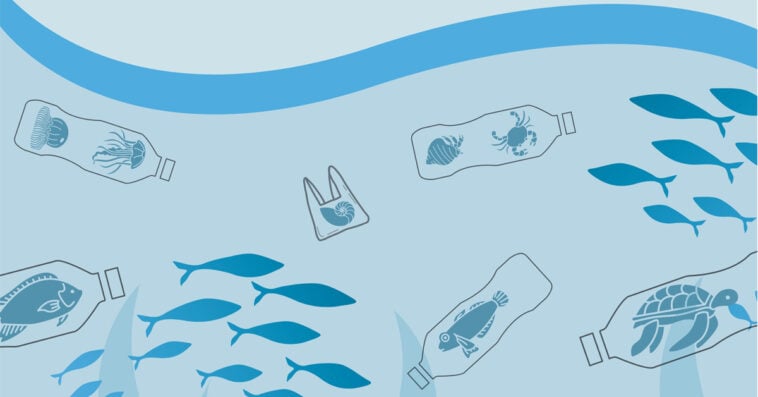They may be nearly invisible to the naked eye, but microplastics are leaving a massive mark on our planet. These microscopic fragments, shed from everyday items like plastic bottles, clothing fibers, and packaging, have infiltrated oceans, rivers, soil, and even the air we breathe. Their persistence in the environment makes them especially dangerous—traveling through food chains, entering drinking water, and potentially threatening human health. For years, scientists have struggled to find an effective way to filter out these stubborn particles from wastewater before they reach ecosystems. Now, a new study has unveiled a promising breakthrough: a hydrogel-based method capable of gathering microplastics from deep waters and transporting them to the surface for removal or treatment.
The growing global threat of microplastics
The scale of the microplastic crisis is staggering. In 2020 alone, roughly 2.7 million tons entered the environment, and experts warn that number could double by 2040, according to the United Nations Environment Programme. Once shed from larger plastic items, these fragments don’t break down quickly—instead, they build up in ecosystems and even inside our own bodies.
Studies from Stanford University have linked exposure to serious health concerns, ranging from weakened immune function and reproductive issues to respiratory disease and certain cancers. On top of that, microplastics often act as toxic hitchhikers, carrying harmful substances like pesticides and heavy metals into waterways, wildlife, and people. Far beyond litter, microplastics have become a pressing threat to both environmental and human health.
The challenge of microplastic cleanup
Curbing the impact of microplastics is no simple task. Their microscopic size, persistence in the environment, and ability to travel through air, water, and food chains make them extremely difficult to capture and remove. Wastewater treatment plants, for example, often fail to filter them out completely, allowing particles to seep back into rivers and oceans.
Scientists have been testing a range of methods to reduce their presence, yet many of these solutions run into significant hurdles. A major challenge for water-borne microplastics is depth: once particles sink too far below the surface, traditional filtration and collection methods struggle to reach them. This has slowed progress in large-scale cleanup efforts.
However, researchers are beginning to overcome this obstacle. One team has introduced a breakthrough approach that actively lifts the particles back to the surface, making them easier to collect and treat. This innovation could mark an important step forward in countering one of the toughest environmental challenges of our time.
A new approach to microplastic pollution
A research team has developed a pioneering approach to retrieving microplastics from hard-to-reach depths. Instead of relying on traditional methods that struggle to capture particles once they sink, the scientists have designed a material that brings them back to the surface.
Their findings, published in Nature Communications, center on a buoyancy-driven hydrogel described as a “self-regulating shuttle for autonomous seek and destroy of microplastics.” In practice, this innovative material can capture plastic fragments underwater and carry them upward, where they can be collected and treated. What makes it particularly remarkable is its autonomy—the hydrogel cycles naturally between deep and surface waters, powered by its own chemical reactions and gas release.
The study notes that the outcome is nothing less than a “self-regulating purification system.” While the initial focus was on removing microplastics, the researchers highlighted its wider potential. The same principles, they suggest, could be applied to neutralize other environmental hazards. As they put it, “This shuttle represents a broadly adaptable system for sustainable pollutant removal and environmental remediation,” adding that it “opens new pathways.”
Prevention is better than cure
While innovative technologies are emerging to clean up microplastics already polluting our environment, prevention remains the most effective strategy. Stopping plastic waste at its source means tackling overproduction and overreliance on single-use materials. Major corporations such as Coca-Cola and Nestlé frequently rank among the world’s top plastic polluters, underscoring the urgent need for systemic change at the industrial level. Without a significant reduction in new plastic output, even the most advanced cleanup methods will be fighting an uphill battle.
But responsibility doesn’t fall on companies alone. Consumers play a powerful role in shaping markets. By choosing products with minimal or no plastic packaging, supporting brands that embrace circular models, and demanding stronger sustainability commitments, individuals can help shift industry practices. Policy changes, such as stricter regulations on single-use plastics and incentives for eco-friendly innovation, can further accelerate this transition.
On a personal level, reducing everyday reliance on plastic—whether by carrying reusable bottles and bags, purchasing items in bulk, or selecting alternatives like glass and stainless steel—also helps safeguard both the environment and human health. After all, the less plastic we introduce into circulation, the fewer microplastics we will face in our oceans, soil, and even our bodies in the years to come.
Sources: Nature Communications Journal, The Cool Down

